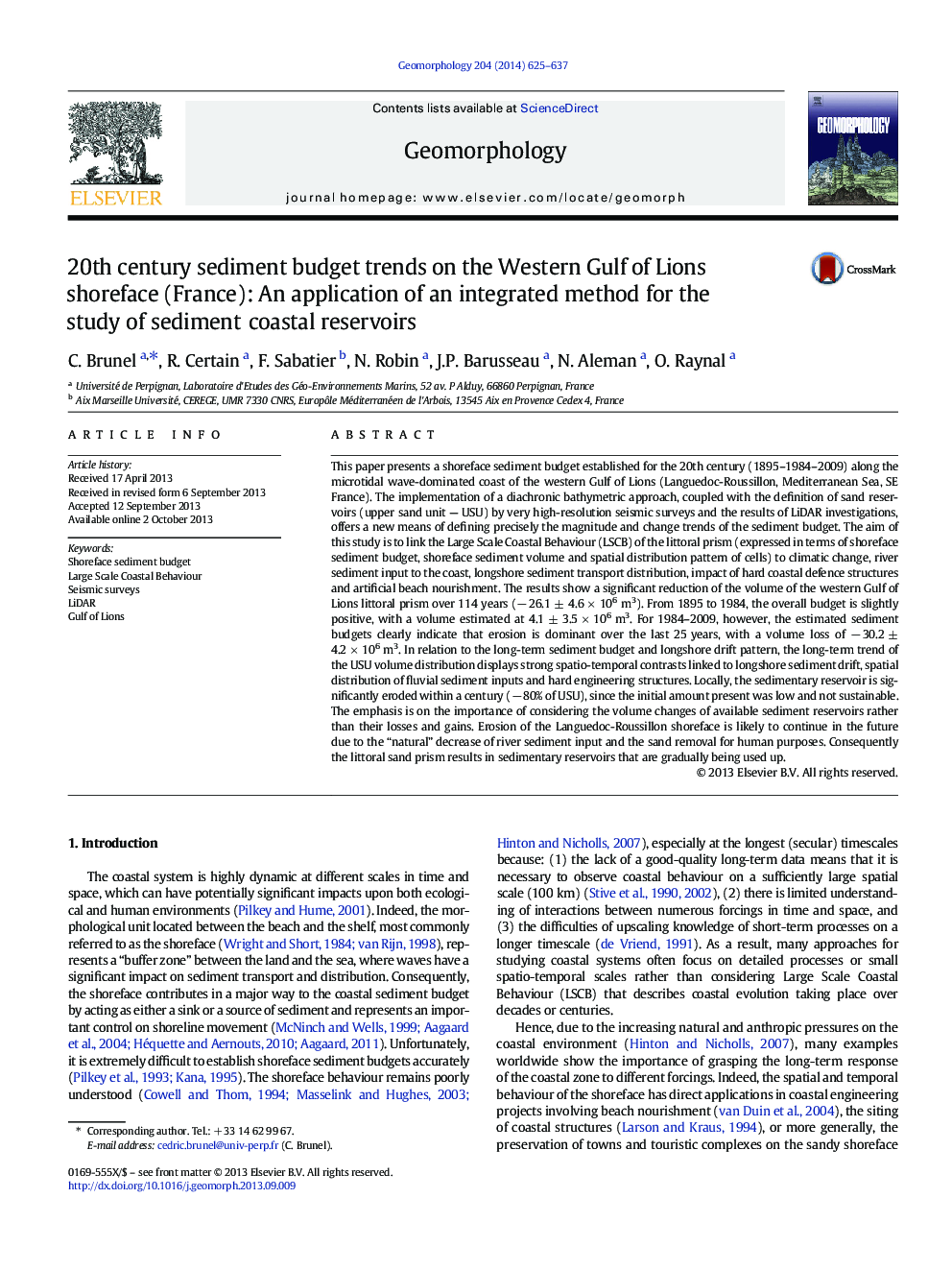| کد مقاله | کد نشریه | سال انتشار | مقاله انگلیسی | نسخه تمام متن |
|---|---|---|---|---|
| 6432802 | 1635445 | 2014 | 13 صفحه PDF | دانلود رایگان |
- We coupled bathymetric and seismic surveys to study littoral sand prism evolution.
- Languedoc-Roussillon shoreface shows significant erosion of the over 114Â years.
- Sediment budget shows in the 80s a shift from equilibrium to an erosional regime.
- Locally, 80% of the shoreface sedimentary reservoir is eroded within a century.
- Weak sandy inputs from rivers and sand dredging practices increase shoreface erosion.
This paper presents a shoreface sediment budget established for the 20th century (1895-1984-2009) along the microtidal wave-dominated coast of the western Gulf of Lions (Languedoc-Roussillon, Mediterranean Sea, SE France). The implementation of a diachronic bathymetric approach, coupled with the definition of sand reservoirs (upper sand unit - USU) by very high-resolution seismic surveys and the results of LiDAR investigations, offers a new means of defining precisely the magnitude and change trends of the sediment budget. The aim of this study is to link the Large Scale Coastal Behaviour (LSCB) of the littoral prism (expressed in terms of shoreface sediment budget, shoreface sediment volume and spatial distribution pattern of cells) to climatic change, river sediment input to the coast, longshore sediment transport distribution, impact of hard coastal defence structures and artificial beach nourishment. The results show a significant reduction of the volume of the western Gulf of Lions littoral prism over 114 years (â 26.1 ± 4.6 Ã 106 m3). From 1895 to 1984, the overall budget is slightly positive, with a volume estimated at 4.1 ± 3.5 Ã 106 m3. For 1984-2009, however, the estimated sediment budgets clearly indicate that erosion is dominant over the last 25 years, with a volume loss of â 30.2 ± 4.2 Ã 106 m3. In relation to the long-term sediment budget and longshore drift pattern, the long-term trend of the USU volume distribution displays strong spatio-temporal contrasts linked to longshore sediment drift, spatial distribution of fluvial sediment inputs and hard engineering structures. Locally, the sedimentary reservoir is significantly eroded within a century (â 80% of USU), since the initial amount present was low and not sustainable. The emphasis is on the importance of considering the volume changes of available sediment reservoirs rather than their losses and gains. Erosion of the Languedoc-Roussillon shoreface is likely to continue in the future due to the “natural” decrease of river sediment input and the sand removal for human purposes. Consequently the littoral sand prism results in sedimentary reservoirs that are gradually being used up.
Journal: Geomorphology - Volume 204, 1 January 2014, Pages 625-637
